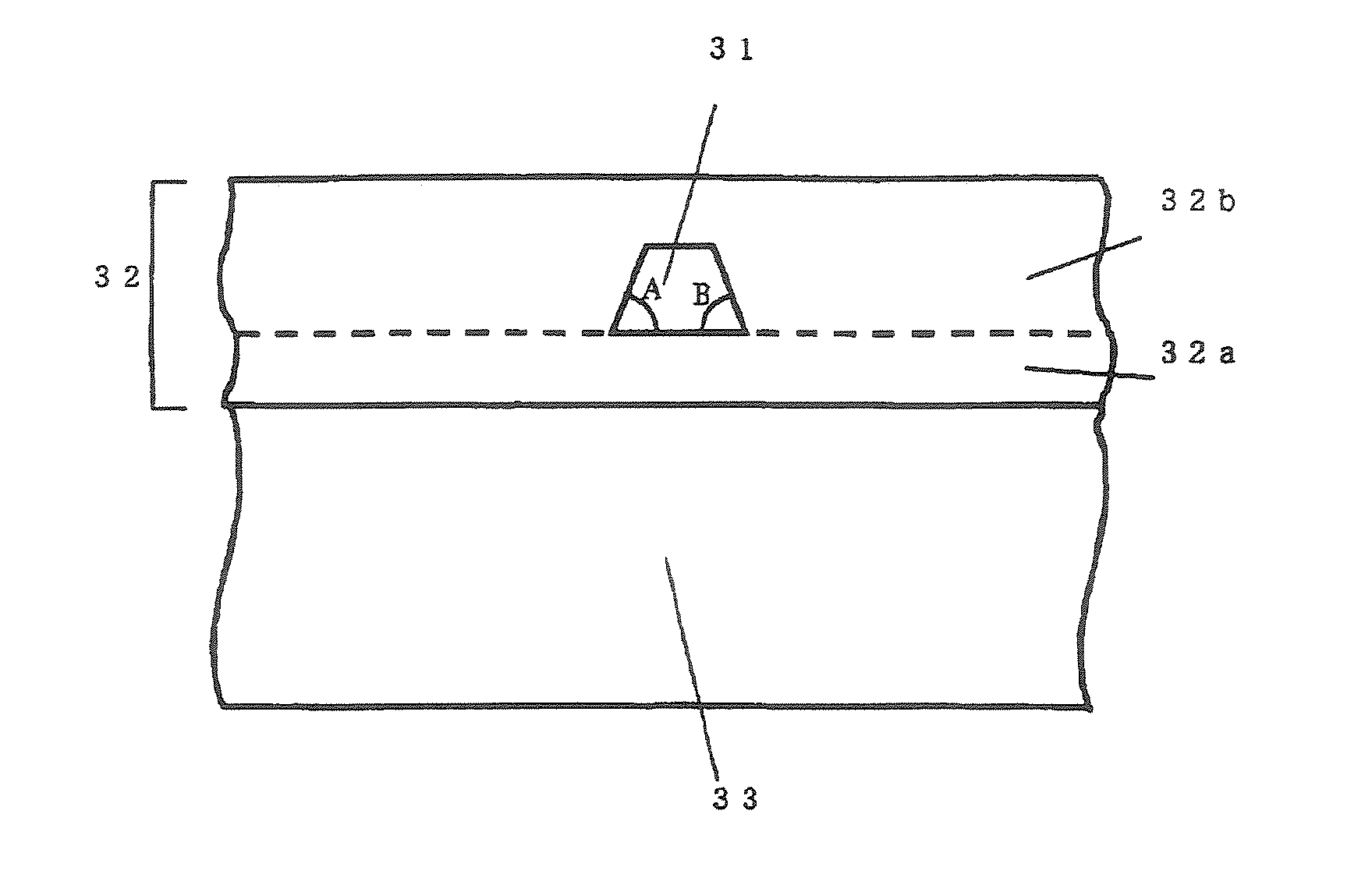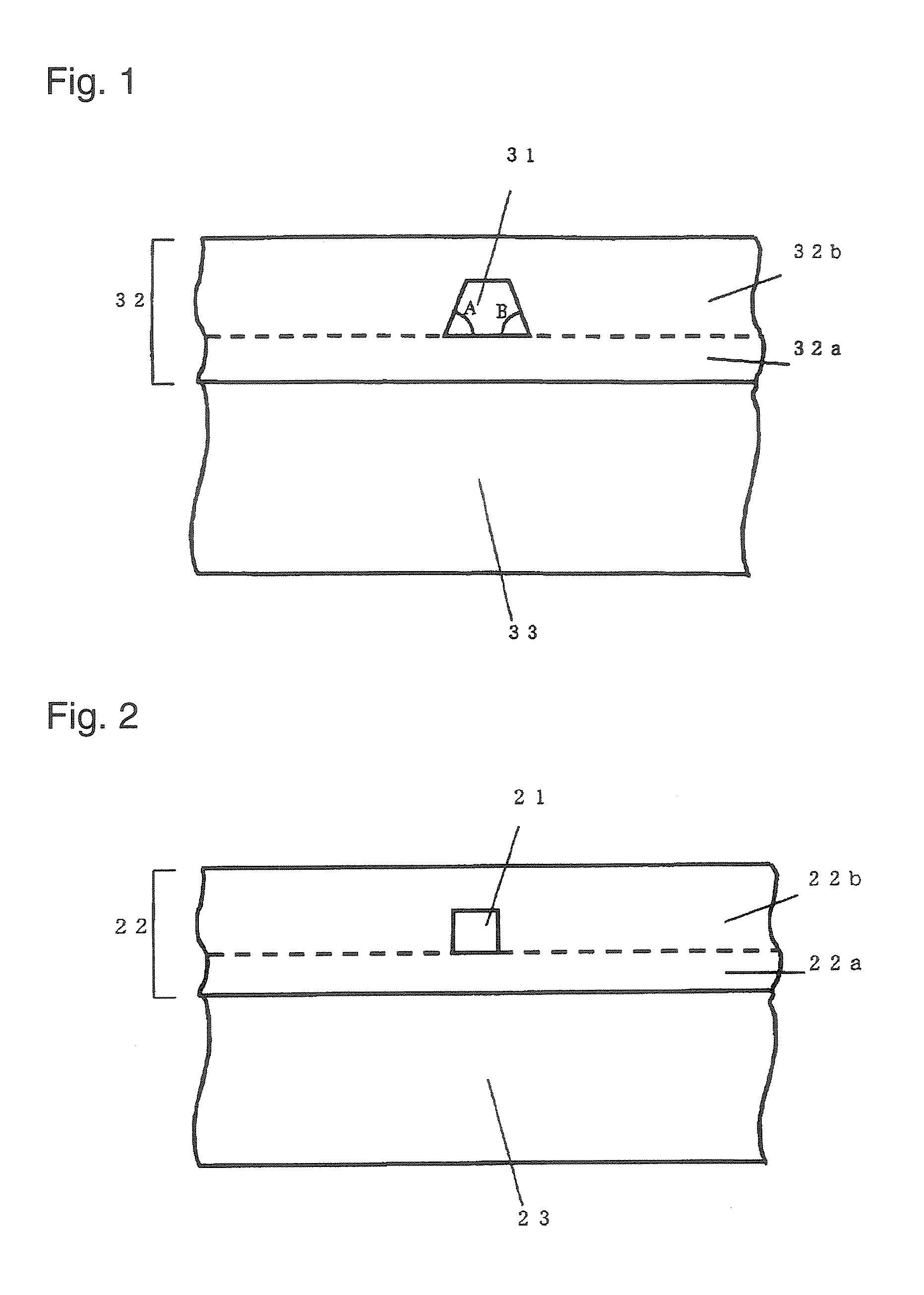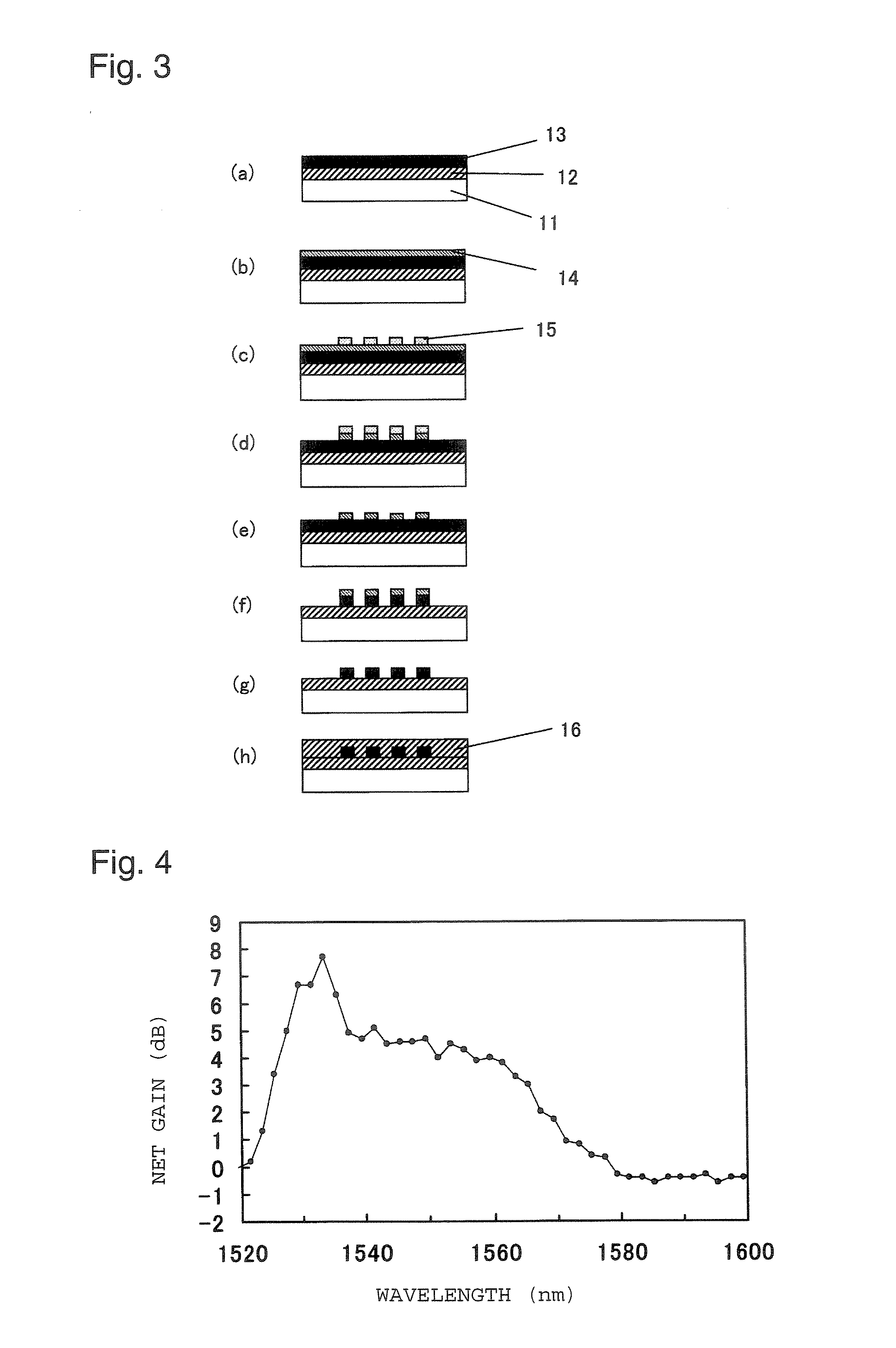Glass optical waveguide
a glass and optical waveguide technology, applied in the field of glass optical waveguides, can solve the problems of difficult to achieve downsizing, difficult to obtain desired transmission band, difficult to form arrays, etc., and achieve the effect of compact optical light guides and low propagation loss
- Summary
- Abstract
- Description
- Claims
- Application Information
AI Technical Summary
Benefits of technology
Problems solved by technology
Method used
Image
Examples
example 1
[0117] On a soda lime silica glass disc-shaped substrate 11 (1 mm thick, 76.2 mm in diameter), an underlayer clad film 12 of 6.6 μm thick was formed. Namely, using a T2 target, sputtering was carried out under the conditions that the substrate temperature was 20° C., argon and oxygen as sputtering gases were flown at flow rates of 30 cm3 / min and 0.5 cm3 / min respectively as converted as standard conditions, the pressure was 0.3 Pa, applied RF power was 100 W and sputtering time was 66 hours. When X-ray diffraction measurement was made to a glass film formed on the substrate, no peak was recognized in a diffraction pattern, and it was confirmed that the glass film was amorphous.
[0118] Then, a core film 13 of 3.3 μm thick was formed on the underlayer clad film. Namely, using a T1 target, sputtering was carried out under the conditions that the substrate temperature was 20° C., argon and oxygen as sputtering gases were flown at flow rates of 30 cm3 / min and 0.75 cm3 / min respectively in ...
example 2
[0128] On a soda lime silica glass disc-shaped substrate 11 (1 mm thick, 76.2 mm in diameter), an underlayer clad film 12 of 8.4 μm thick was formed. Namely, using a T2 target, sputtering was carried out under the conditions that the substrate temperature was 20° C., argon and oxygen as sputtering gases were flown at 30 cm3 / min and 0.75 cm3 / min respectively in terms of values under standard conditions, the pressure was 0.3 Pa, applied RF power was 100 W and sputtering time was 60 hours. When an X-ray diffraction measurement of the glass film formed on the substrate was carried out, no peak was recognized in the diffraction pattern and it was confirmed that the glass film was amorphous.
[0129] Then, on the underlayer clad film, a core film 13 of 3.3 μm thick was formed. Namely, using a T2 target, sputtering was carried out under the conditions that substrate temperature was 20° C., argon and oxygen as sputtering gases were flown at flow rate of 30 cm3 / min and 0.5 cm3 / min respectively...
example 3
[0139] Using a target T2, sputtering was carried out under the same conditions as those of Example 2 to form, on a soda lime silica glass substrate, an underlayer clad, a core and a protection film which becomes an upper layer clad, were formed and a mask film of 1.3 μm thick was formed under the same conditions, and thereafter, etching was carried out under the same conditions of Example 2 to pattern the mask.
[0140] Subsequently, resist on the mask film was removed under the same conditions of Example 2, and using the mask film thus patterned, the glass film was NLD etched under the following conditions. Namely, flow rates of AR gas and C3F8 gas were 49.5 cm3 / min and 5.5 cm3 / min respectively in terms of values under standard conditions. Further, at this time, the pressure was 0.2 Pa, discharge electric power was 1,000 W in terms of antenna power and 250 W in terms of bias power, currents of three neutral magnetic field generation coils arranged in vertical direction of a chamber w...
PUM
 Login to View More
Login to View More Abstract
Description
Claims
Application Information
 Login to View More
Login to View More - R&D
- Intellectual Property
- Life Sciences
- Materials
- Tech Scout
- Unparalleled Data Quality
- Higher Quality Content
- 60% Fewer Hallucinations
Browse by: Latest US Patents, China's latest patents, Technical Efficacy Thesaurus, Application Domain, Technology Topic, Popular Technical Reports.
© 2025 PatSnap. All rights reserved.Legal|Privacy policy|Modern Slavery Act Transparency Statement|Sitemap|About US| Contact US: help@patsnap.com



